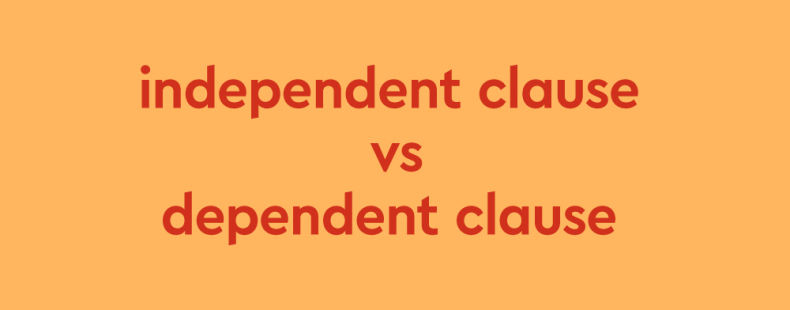⚡ Quick summary
An independent clause is a clause that is also a complete sentence, as with the clause (and complete sentence) Birds fly. A dependent clause is a clause that is not a complete sentence, as with the clause Because birds fly.
You might have seen the terms independent clause and dependent clause floating around. A clause is a group of related words (that is, a phrase) that contains both a subject and a predicate. But what makes a clause independent or dependent?
In this article, we’ll define independent clause and dependent clause, discuss how they relate to coordination and subordination, explain the role of conjunctions with independent clauses, and look at some sentence constructions.
Independent vs. dependent clauses
When a clause can stand alone as a complete sentence with a clear meaning, it’s considered an independent clause. If a clause only makes sense when you join it with another clause, it’s a dependent clause (or subordinate clause).
For example, in the morning is a phrase. We can make it a clause by adding the subject and verb combination she ran to give us the sentence She ran in the morning. This sentence is an independent clause because it has a subject (she) and a predicate, made of the verb ran and the phrase in the morning. Together, they stand alone as a complete sentence.
By contrast, until she ran in the morning is a dependent clause. It, too, has a subject (she) and a predicate made up of a verb (ran) and a phrase (in the morning). But because this clause starts with the preposition until, it’s not a complete sentence. Instead it’s a dependent clause. It depends on more information to make a complete sentence.
Coordination and subordination
While an independent clause can be a standalone sentence, not every sentence will be made of just one clause. If two clauses are closely related, you can connect them into one sentence.
For example, we can combine two or more independent clauses to create one sentence. This is called coordination. When we combine the independent clauses Rabbits are quick and Turtles are slow, we get the sentence Rabbits are quick, but turtles are slow. Because both clauses can stand on their own as sentences, they each have equal importance in the new sentence. We are coordinating two complete sentences into one.
We can also combine an independent clause with a dependent clause. This is called subordination. For example, we can combine the independent clause The parade will be canceled with the dependent clause if it rains to create the sentence The parade will be canceled if it rains. With subordination, the independent clause has more importance than the dependent clause. We have subordinated the dependent clause to the independent one.
Conjunctions
Conjunctions are connective words that help you join clauses. The type of conjunction that we typically use to connect independent clauses together are called coordinating conjunctions. You can remember the seven coordinating conjunctions with the mnemonic device FANBOYS: for, and, nor, but, or, yet, and so. These are the ones you’ll use to coordinate (combine) independent clauses.
For example:
- Dave is from Austria, and I am from Hungary.
- The toaster won’t fit in the cupboard, so just leave it on the counter.
A subordinating conjunction is a word or short phrase that begins a dependent clause. It helps to establish the relationship between the independent and dependent clause. A few examples of subordinating conjunctions are although, if, because, while, and rather than. A subordinate clause can appear at the beginning, middle, or end of a sentence.
For example:
- When it snows, Lindsey always goes sledding.
- Aroline could win the race if she wanted to, although she doesn’t feel like it.
- We threw out the milk because it expired.
Sentence construction
If you’re connecting two independent clauses with a coordinating conjunction, there should be a comma before the coordinating conjunction. For example, we would put a comma before the word and in the sentence She directed ten movies, and the horror movie was her best one. Each clause in this sentence is a complete thought on its own. They work better as a unit because the second clause expands on the meaning of the first. The conjunction and comma help to show that the clauses are still separate thoughts.
If you want to join two independent clauses without a conjunction, you can use a semicolon instead, as in She directed ten movies; the horror movie was her best one.
On the other hand, we don’t need to put a comma between an independent clause and a dependent clause. For example, we can say We sat down after we bought ice cream. The resulting sentence is one continuous idea and doesn’t require a comma.














